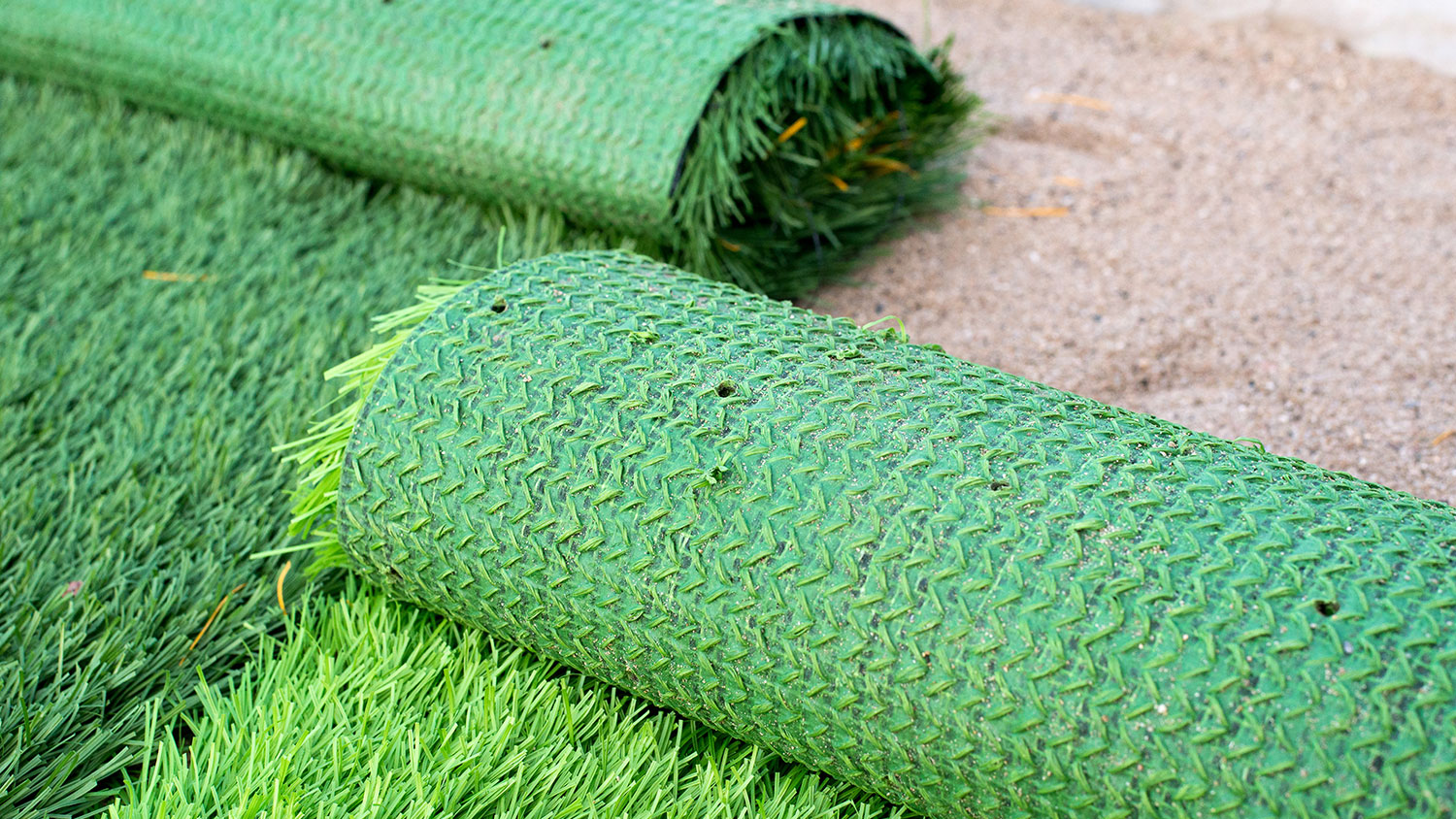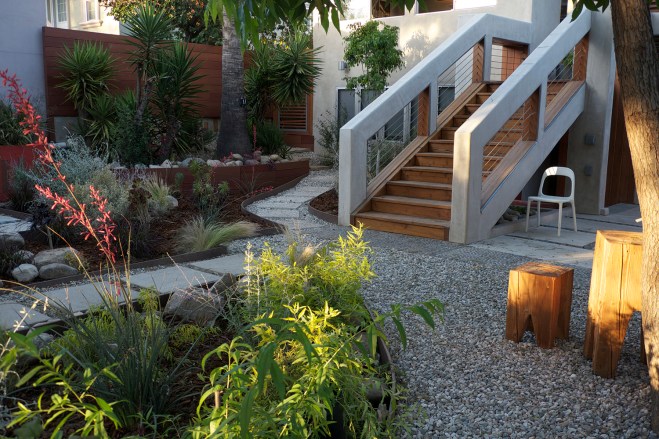Q. I haven’t watered my lawn since 2009. Though we have drought here in California, I still get straggles of green after brief rain. I will xeriscape one day with mostly rocks in the front. My question: What about artificial turf for a smallish section of backyard? Is it bad for the soil underneath? And what is it made of? Would paving stones or cement be better? I have a dog and grandkids who play there.
Cynthia T.
A. Dearest Cynthia,
Could we be at the beginning of the end for the Great American Lawn? Not so long ago, having a lush, verdant thatch of grass was a source of pride and joy for homeowners nationwide. But lately – especially as California and other parts of the Southwest get used to lingering drought – people seem to be having a change of heart about these thirsty, high-maintenance little monocultures. And with the average suburban lawn soaking up 10,000 gallons of water per year (not including rain), and also using synthetic fertilizers and lawnmower gas, I can’t say I’d be too sorry to see it knocked off its pedestal.
You’re far from alone in thinking about getting off the grass. Turf removal rebate programs across California are tempting many of your neighbors to do just that, and artificial turf suppliers are doing brisk business. Fake grass (“frass,” if you will) is only one option for a lawn makeover, however, and I think some other alternatives are well worth a look for you. Your plan for xeriscaping is a splendid one, as native landscaping requires much less water to maintain and lends a certain natural California flair to the yard. But what to do about that playtime patch in the backyard?
Artificial turf has come a long way from the spiky, scratchy stuff of yesteryear – reportedly, new varieties look and feel almost like the real deal, without the hefty water and mowing demands. But environmentalists are wary of this faux-grow for a few reasons: One, it’s plastic, a nonrenewable petroleum product. You can find some brands made from soybean oil and recycled water bottles, but all plastic grasses are tough to recycle at the end of their 15ish-year lifespan, so most are destined for a landfill. Fake grass doesn’t provide habitat for bugs and other critters the way real plants do, and it can harm the biodiversity of the soil under it. Artificial turf gets hot underfoot – hot enough to contribute to the urban heat island effect – and it can lead to excess stormwater runoff when it does rain.
In short, Cynthia, I think you can do better.
How so, you ask? Well, how about hardscaping – that is, hard stuff that isn’t vegetation or soil, such as pavers or gravel? This kind of thing needs no watering and lasts a long time (unlike, say, bark chips, which need replacement). Because you’re specifically looking for a frolicking zone for your grandkids and Fido, I’d lean toward gravel (locally sourced and crushed rather than rounded, if you can get it) or decomposed granite, which can have a nice, natural look and provide easy drainage. Paving stones can also serve, but look for permeable pavers rather than concrete to allow water to seep underground, not get swept away.
Perhaps you prefer something more botanical instead? I’m hearing good things about sedges, clover, thyme, and other groundcovers. These kinds of drought-tolerant, no-mow turf replacements will still require some water, but far less than typical turf grass. And some hardy species can handle being underfoot of rambunctious kids. You’ll have to consult your local experts (try university extension offices or native plant societies) to pick the best plants for your particular conditions. Because we’re talking about a fairly small area in your backyard, you might decide a groundcover plant is worth a little water use. (And if you can cultivate the area with gray water, all the better.)
Do have fun as you undertake your water-wise makeover; landscape designers are doing some lovely things with stones, succulents, grasses, and multicolored gravel. One of these days, neighbors will eye each other’s tasteful groupings of cacti and meandering permeable paths rather than their water-guzzling lawns – after all, we have to keep up with the Joneses on something.
Desiccatedly,
Umbra



